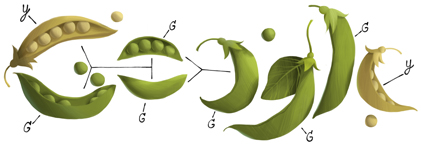Second donor question (might as well get them out of the way when I’m still awake!):
“I would like you to tackle the question of why there is death in terms of evolution.”
What a good question! I should preface this by saying this isn’t my particular field of research, so I don’t know any relevant studies to cite off the top of my head – but I’ll try to explain death in general evolutionary terms.
So, why do things die? At first glance, it seems counter intuitive. The whole driving force behind evolution is “survival of the fittest” – fittest being those who produce the most viable offspring. Wouldn’t it benefit an organism to live as long as possible, continuously producing more and more offspring?
The roadblock is that organisms are constrained by the laws of physics. When you boil it down to the basics, living things are just really complex molecular structures and chemical reactions. And it takes a lot of energy to keep the entropy or “disorder” of a system from increasing (which is a vast oversimplification of the Second Law of Thermodynamics, I know – forgive me). That energy comes from things like the sun (woooo photosynthesis!) or metabolizing food (woooo citric acid cycle!).
Aging is basically the general decay of processes. As you build up more and more errors, things just don’t work as well. And there becomes a point where you make a trade off. Do you expend lots of energy to keep the old structure alive so you can inefficiently reproduce, or do you scrap it and focus on the newly made organisms?
Now, that’s a painfully anthropomorphic view of evolution, but it’s basically how it works. Keeping a decaying organism alive doesn’t significantly increase its fitness. In fact, it can even decrease its fitness! If you’re in an environment where resources are scarce (aka, pretty much every environment), you’re competing with your children for those resources. So resources you use to keep yourself alive could alternatively be going into making grandchildren for you. Sometimes it’s in your best evolutionary interest to die!
I think this can sometimes be an odd concept for humans to grasp, since we’ve recently been able to avoid nature’s typical limitations. Back in our savanna days, we’d usually get eaten or die of disease before aging took place. There was no evolutionary benefit to have mechanisms in place to stave off aging even longer when we’d usually die before getting to that point. Evolution doesn’t care if your joints start hurting or you don’t reproduce as well, because you wouldn’t have been around anyway!
And that’s what differentiates scientists from the rest of people. I find this absolutely fascinating, while I probably just depressed a lot of you by calling you decaying bags of molecules that nature doesn’t care about. Ah well.
This is post 7 of 49 of Blogathon. Pledge a donation to the Secular Student Alliance here.


